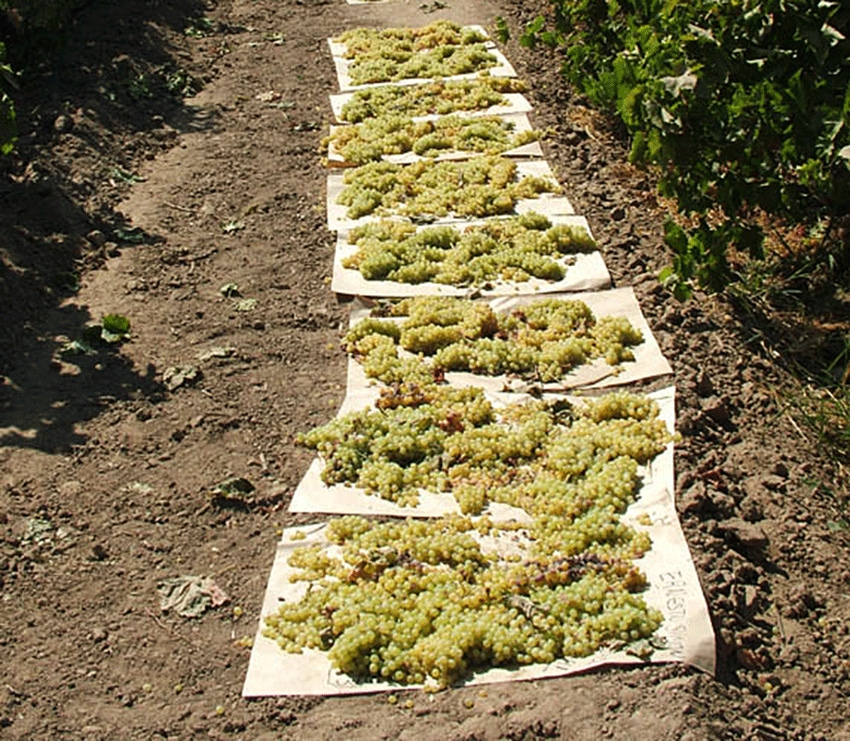
Where were you when you first heard Marvin Gaye singing the catchy song, “Heard it through the grape vine; I’m about to lose my mind?”
Do you also remember the chorus line of sexy brown California Raisins slowly singing: “I bet you're wonderin' how I knew, ‘bout your plans to make me blue, with some other guy you knew…”
What year was that? Would you believe 1987?
The groups don’t do many personal appearances, but word through the grape line buzz is that they might be planning a comeback. In the meantime, here are today’s raisin industry stats:
On approximately 200,000 acres, 3,000 California Raisin growers produce 100 percent of the U.S. raisin crop, totaling approximately 350,000 tons annually in an area within a 60-mile radius of Fresno, known as the central San Joaquin Valley.
Two-thirds of U.S. raisin production is consumed in the U.S. and Canada, while one-third is exported to nearly 50 countries, with Japan and the United Kingdom being the top two export markets.
WHAT ARE RAISINS?
Raisins are essentially dried grapes of the Vitis vinifera natural seedless varietal type, and are typically dried by the sun, whether on paper trays or dried on the vine. Natural (sun dried) seedless raisins include Thompson seedless and other newer cultivars, such as Selma Pete, Fiesta and DOVine.
California Golden Seedless and California Dipped Seedless raisins are mechanically dried and processed. Other raisin varietal types include Zante Currant, Muscat, Monnuka, Sultana, and other seedless. Raisins may also be further processed into raisin paste and raisin juice concentrate.
Once dried, raisins are brought from the vineyards, stored in wooden bins, and processed as needed by having their stems and capstems removed, then sorted by size, and cleaned and washed in water to ensure a wholesome and safe final product.
PROCESSING RAISINS
Quality control plays an important part once raisins are at the processing plant. Before raisins are taken from their bins, government inspectors use long prods to take samples from the middle of each box. Strict standards must be met to ensure that each box of raisins is free of imperfections.
Next, raisins are processed. They are poured into a hopper, which feeds onto a series of conveyor belts and drums that remove any remaining stems, chaff, or lightweight fruit. Then, they are sent through a brisk vacuum air stream to catch any undesirable material that may have been missed.
Next, they are size-graded and thoroughly washed. Raisins then move past a sophisticated laser sorter that uses light beams and a computer to determine if anything other than raisins is passing through the stream. If the computer determines something is not a raisin, it instantly sends a small burst of air to knock the material out of the stream into a trough below, all at incredibly high speeds.
Hand inspections are done throughout the packaging process by quality control technicians, all aimed at making California raisins the cleanest, highest quality in the world!
SUN DRYING
Natural seedless raisins are dried by the sun, then loaded into bins for delivery to processing plants. Raisins can either be dried on paper trays on the ground between vineyard rows or dried on the vine, and mechanically harvested once the desired level of dryness is achieved.
Before they are unloaded from their bins, government inspectors take long prods to gather samples from the middle of each box. United States Department of Agriculture (USDA) inspectors examine incoming fruit to ensure that each box meets guidelines.
Then raisins are cleaned, going through a series of conveyor belts and drums to remove remaining stems, chaff, or lightweight fruit. They are also sent through a vacuum air stream to catch any other undesirable materials. Finally, they’re size-graded and thoroughly washed in pure water.
About the Author(s)
You May Also Like




